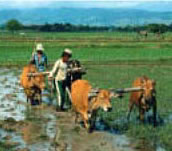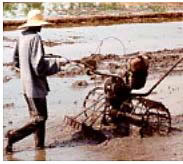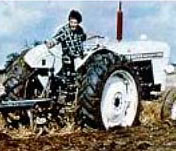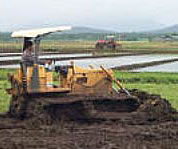Types of farm power
Introduction
All farm power operations require a specific amount of energy. The time required will vary according to the size and type of power source used. Power can be supplied by humans, animals, or machines.
Explore the information for each of the five power sources given below.
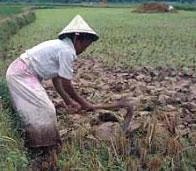 1. Human labor
1. Human labor
In some cases, manual labor is more cost-efficient than machines.
One person can:
- shift 2-3 cubic meters of soil/day
- cultivate 60 square meters/day
- cultivate 1 hectare in 150-160 days
- hand weed 1 hectare in 30-35 days
Advantages: cost-effective
Disadvantages: time consuming, physically taxing
2. Animal power
Animals are still widely used as a major power source. A pair of animals will take 8-10 days to plow 1 hectare.
Advantages: Low maintenance, multi-purpose, self-replacement.
Disadvantages: Limited daily working hours, slow, high person/power ratio.
3. Two-wheel tractor
Two-wheel tractors are normally powered by 6-12 kw gasoline or diesel engines and are fitted with either rubber tires or steel cage wheels. A two wheel tractor can plow 1 ha/day.
Advantages: Multi-purpose vehicle, best in tough conditions, performs well in both wet and dry conditions, simple to use and operate.
Disadvantages: Cost of ownership and operation, could cause fatigue, although ride-on versions are now available.
4. Four-wheel tractor
Four-wheel tractors can be divided into 2 categories: two-wheel drive and four-wheel drive.
|
|
Advantages |
Disadvantages |
|
Two-Wheel Drive
|
|
|
|
|
|
|
|
Four-Wheel Drive
|
|
|
5. Track laying tractor
Used mainly for civil work but can be used for tillage.
Advantages: Good traction, high power availability at draw bar, lower operating cost.
Disadvantages: High maintenance cost, poor maneuverability, high purchase cost.

